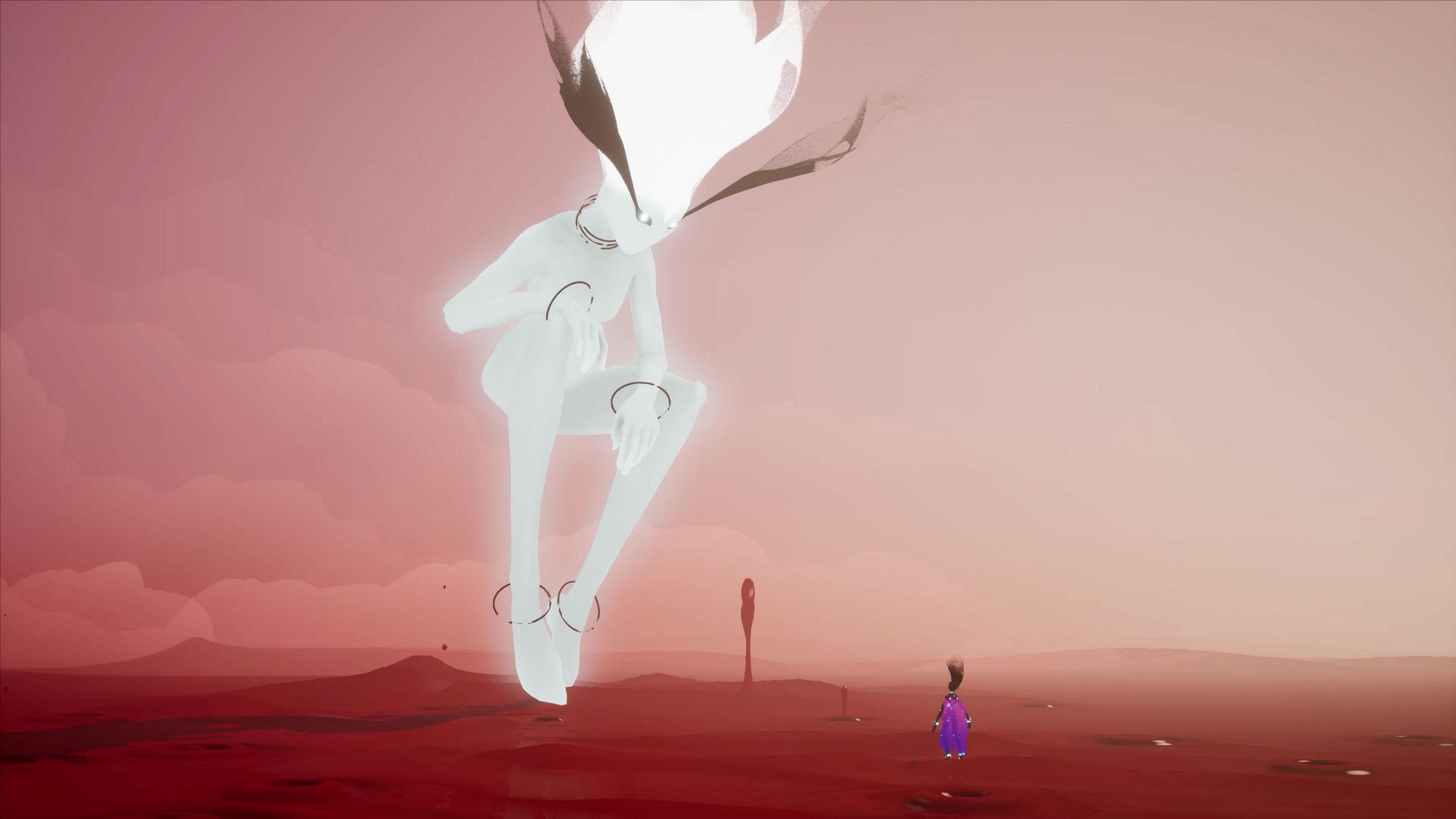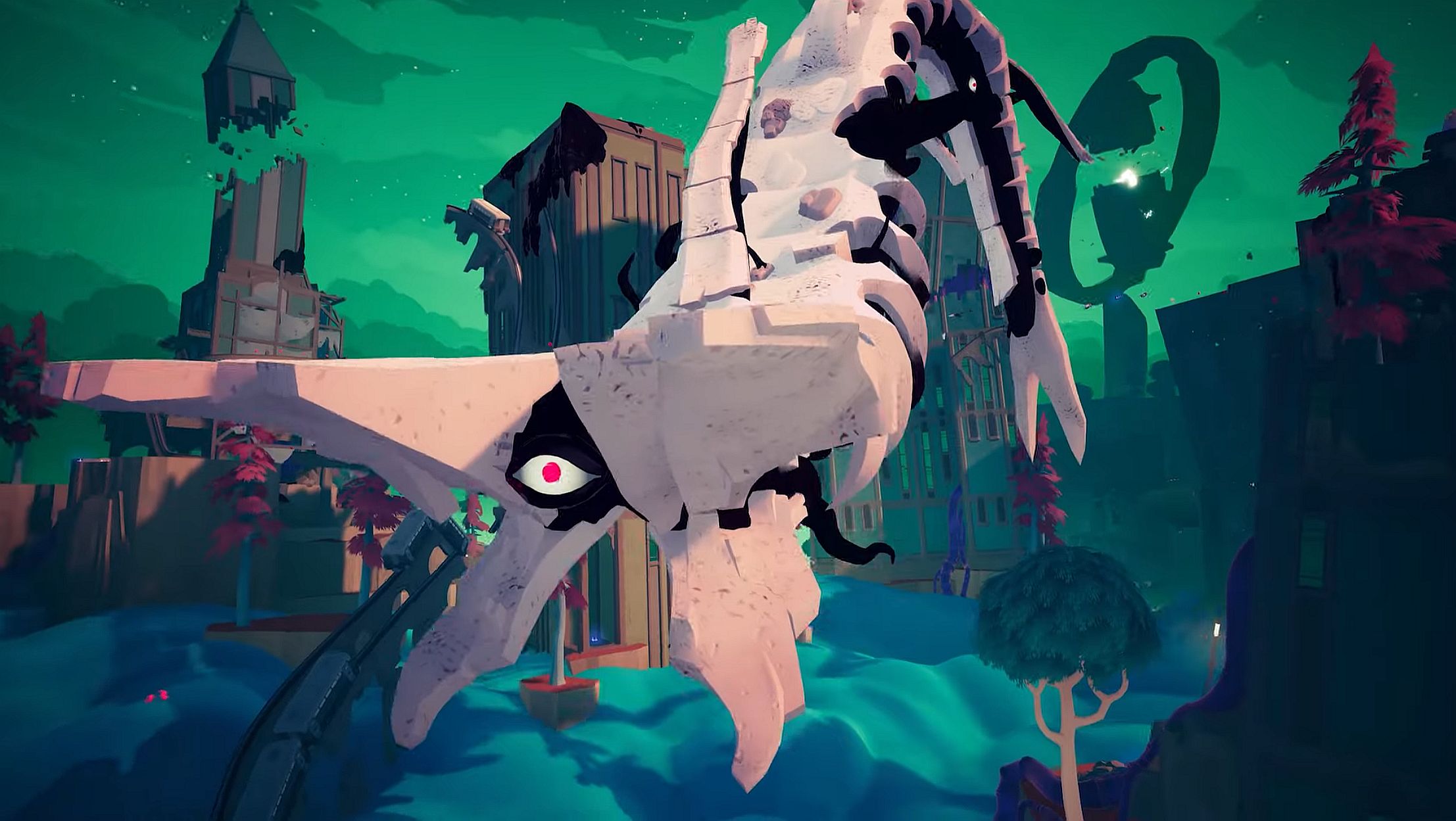Solar Ash is the follow-up effort from Hyper Light Drifter developer Heart Machine. It’s quite a radical departure in terms of appearance and gameplay, being a full 3D action-platformer instead of a classic Zelda-like action adventure. The world is fully explorable, and it’s best to do this at pace, your character Rei able to glide around as if on ice skates, double jump, dash, slow time, and grapple. The moves you learn at the start of the game remain your moves throughout your journey, and this has its ups and downs. Traversal around the world is fairly laid back, at least initially, with only some token enemies to contend with, but the end of each area sees you take on a huge creature. You employ the same moves on these skeletal foes, and early on it’s pretty easy to fall over the different button commands due to the speed you need to perform at. You’ll get better, though, so by the end you’re a pro - not surprising given that you’ve been using the same moves for the length of the game. I found the game peaked around the mid-way point. I’d got the controls down, I knew what my character could do, and how best to move at speed in the world and on the backs of giant creatures. I was a king. I’d found flow and was loving it. It was as if I was playing one of those cool GIFs you see posted on Twitter but you’re never good enough to play like. Solar Ash lets you be the GIF, and it’s really cool when you’re in that moment. But the game continues, and then continues some more, and doesn’t change things up enough. It’s not that Solar Ash is a particularly long game, but I found the thrills from the gameplay gradually diminished as I got closer and closer to the finale, which is a shame as you end up tackling bigger and more impressive foes. New mechanics and obstacles are introduced, such as hazardous water, various grind rail variants, and suits with varying abilities (that aren’t essential and many people won’t get), but the core loop is the same throughout. You enter an area (It looks gorgeous, by the way - the game is a triumph in that regard, a ruined beauty that you’ll frequently want to stare at), find the NPC that unlocks the location on your map, then scan the area for areas of interest. You then must complete mini challenges, hitting a series of nodes in order while working with a time limit, to get a step closer to the boss encounter. These node challenges, like the boss battles, are where you’ll do some of your best platforming acrobatics, but the fun wanes after a while. There are numerous story elements folded into the adventure, some optional, but I found the characters more interesting than the overarching quest: Rei, a Voidrunner, attempting to save the world from the Ultravoid. It just sort of hangs there, giving you a reason for what you’re doing, but despite some solid voice work I wasn’t all that engaged. Add that to the general sense of deja vu and the fairly simplistic combat, and I felt like I was going through the motions for the final third of the game. Solar Ash deserves props for its world design, the fluidity of movement when you’re in the groove, and the sense of scale on display, so it’s somewhat painful to be down on it to the degree I am. It’s not far from being a bit special, the kind of indie gem that everyone has to play, but it’s unfortunately just not quite there. There’s still a great deal of fun to be had here, and your mileage with the mechanics might be better, but for me Solar Ash is so focused on delivering flow, it forgot that you don’t want to go on the same walk every day. Disclaimer: Tested on PS5. Game provided by publisher. Also available on PS4 and PC.

